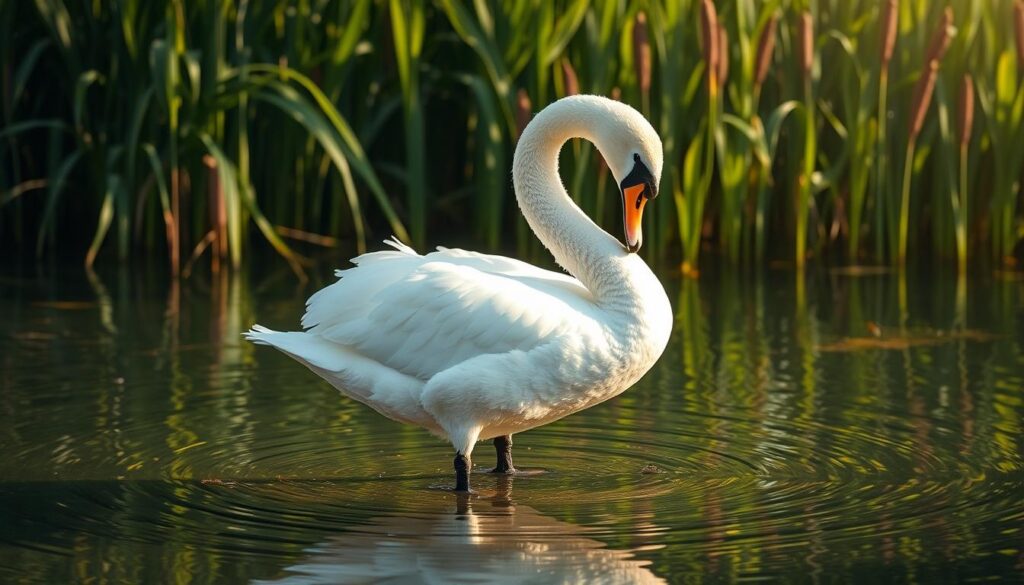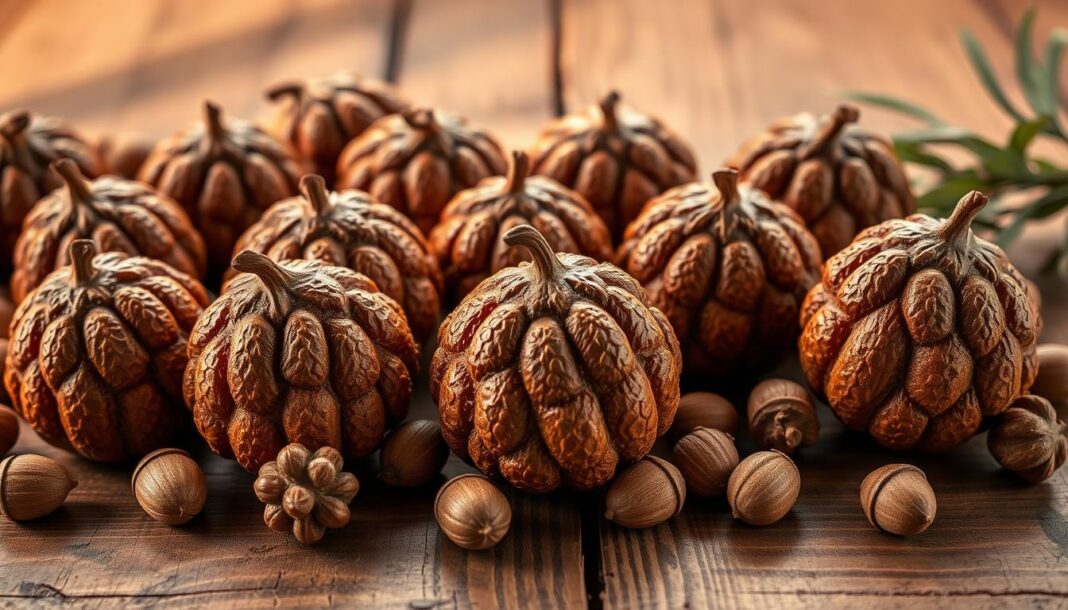At Historical Foods, we delve into the fascinating world of culinary delights, and one of the most intriguing dishes we explore is the swan, a bird with a rich history and complex preparation requirements.
The meat of a swan is distinct from other game birds like goose or duck, offering a unique texture and flavor profile that has captivated nobility and culinary enthusiasts for centuries.
Historically, swan was a prestigious dish reserved for royalty and nobility, but perceptions have evolved over time. Today, we examine why swan preparation remains relevant in certain cultural contexts and specialized culinary circles.
Our comprehensive guide covers everything from sourcing to serving, with expert tips on addressing the challenging taste often described as “fishy mutton.” We bring you the most authoritative information on this rare culinary experience, researched by our team at Historical Foods.
Key Takeaways
- Understanding the unique characteristics of swan meat is crucial for its preparation.
- Swan was historically a dish for nobility and royalty, reflecting its prestige.
- The preparation of swan requires specialized knowledge due to its unique characteristics.
- Modern culinary practices continue to evolve, incorporating traditional methods.
- Cultural contexts play a significant role in the continued relevance of swan preparation.
The History and Legality of Swan Consumption
While swans are now protected in many countries, their meat was once a coveted dish at royal banquets. The tradition of consuming swan meat dates back to medieval times, where it was served at grand feasts. The practice was not about savoring the taste, often described as “fishy mutton,” but about showcasing wealth and status.
Royal Connections: The Swan as a Status Symbol
The connection between swans and royalty is deeply rooted in history. In England, since the 12th century, all swans have officially belonged to the monarch, making the consumption of swan meat a royal prerogative. This association made swan meat a status symbol among the nobility, who sought to emulate royal traditions. The ceremonial presentation of swans at banquets was a display of power and prestige.
Modern Regulations on Swan Hunting and Consumption
Today, the consumption of swan meat is heavily regulated. Strict protection laws in most countries have made hunting and consuming swans a rare practice. The legal frameworks governing swan hunting and consumption vary by jurisdiction, with some countries protecting swans entirely, while others allow limited hunting under specific circumstances.
| Country | Protection Status | Hunting Allowed |
|---|---|---|
| England | Protected | No |
| United States | Regulated | Yes, with permits |
| Australia | Protected | No |
Understanding these regulations is crucial for appreciating why swan meat has largely disappeared from modern tables. The historical context and current legal frameworks highlight the complex relationship between swan consumption and societal values.
Preparing Your Cooked Swan: From Field to Kitchen
To cook a swan, one must first navigate the complexities of sourcing and preparing the bird, a process that demands attention to detail and adherence to regulations. The preparation of swan meat for cooking is a multifaceted process that involves several key steps, from ethical sourcing to final presentation.
Ethical Sourcing and Selection
Ethical sourcing is paramount when it comes to swan meat. We guide you through the legal requirements for sourcing swan meat, which vary significantly by region and are often more restricted than for other game birds like duck or goose. Proper selection is crucial; we explain how to identify swans that might be legally harvested in permitted areas and how to ensure they’re of appropriate size and age for consumption.
Cleaning and Plucking Techniques
The cleaning process for swans requires special attention due to their size and feather structure. We provide detailed instructions on how to clean and pluck swans effectively, based on both historical and modern techniques. This includes methods for removing the skin while preserving it for potential presentation purposes, a traditional technique that dates back centuries. 
Addressing the Flavor Challenge
Swan meat can be challenging due to its natural flavor profile and potential for dryness. We share expert techniques for addressing these challenges, including brining with salt and other seasonings to reduce gaminess and enhance the overall flavor. Managing the fat content is also essential, as it can significantly impact the final taste. Additionally, we discuss moisture retention strategies to prevent the meat from becoming too dry during cooking, ensuring a more enjoyable dining experience.
Traditional Swan Cooking Methods
From medieval feasts to modern kitchens, traditional swan cooking methods continue to fascinate and challenge cooks. We explore the historical techniques that have been used to prepare this majestic bird, focusing on both the spectacle and the culinary aspects.
The 14th Century Approach: Reclothed Swan
The “reclothed swan” is a medieval culinary spectacle where the cooked swan is presented in its original skin and feathers. According to the 14th-century “Le Menagier de Paris,” one prepares a reclothed swan by first splitting it between the shoulders and along the stomach, then removing the skin from the neck. The bird is then cooked on a spit, skewered, and gilded. After cooking, it’s reclothed in its skin, with the neck arranged to look natural. This dish was served with yellow pepper.

Roasting a Whole Swan
Roasting a whole swan differs significantly from roasting smaller birds like goose or duck, primarily due to its size and the characteristics of its meat. To roast a whole swan, one must carefully prepare the skin, ensuring it’s clean and dry. The swan is then seasoned, typically with salt, pepper, and herbs, before being placed in a roasting pan. The roasting process requires patience, as the large size of the bird demands a longer cooking time at a moderate temperature to ensure even cooking.
Alternative Preparation Methods
For those looking beyond traditional roasting, alternative methods can make swan meat more approachable. Two such methods are making ground swan sausage and swan jerky.
Ground Swan Sausage
Ground swan sausage is made by mixing ground swan meat with fat and various seasonings, then stuffing it into casings. This method helps mask the strong flavor of the swan meat, making it more palatable.
Swan Jerky
Swan jerky is another alternative, where thin strips of swan meat are cured and dried. This process not only preserves the meat but can also enhance its flavor, making it a unique snack.
Modern Swan Recipe with Flavor Enhancements
Our recipe for cooked swan incorporates several techniques to enhance its natural flavors and retain moisture. To start, we recommend brining the swan meat, particularly the breast portions, in a generous amount of kosher salt to tenderize it and reduce gaminess.
The art of preparing swan is not new; historical culinary practices, much like those used for other game birds such as medieval chicken, have influenced our approach. New Zealand chefs have pioneered innovative methods for cooking game birds, including swan, which we draw inspiration from.
To further enhance the flavor, we suggest applying a compound butter made with unsalted butter, fresh parsley, fresh sage, and fresh thyme. This not only adds complementary flavors but also helps maintain the moisture of the meat. Wrapping the swan in bacon provides additional fat and flavor, significantly improving the dining experience.
Proper seasoning is crucial; we recommend using black pepper and salt to taste. The key to cooking swan is controlling the cooking time and temperature to avoid overcooking, which can exacerbate its negative qualities. For accompaniments, consider roasting fingerling potatoes, carrots, and other root vegetables like turnips and parsnips to complement the dish.
By following these steps and using quality ingredients, you can create a delicious and memorable meal featuring swan, a true game bird delicacy.


